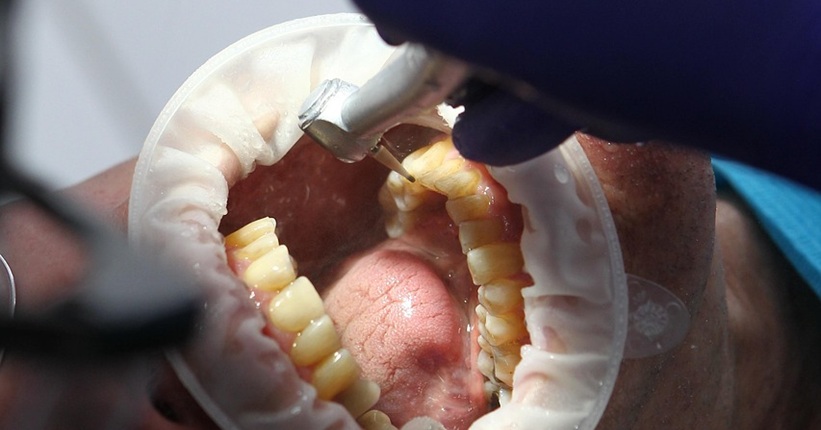
Removing tartar — how to do it right
Tartar is a hard deposit that naturally settles on the teeth. However, it can lead to serious health problems such as tooth decay and gum disease, so it is important to remove it regularly. In the article, we present the different methods of removing tartar - both professional and home - and their advantages and disadvantages to help you choose the best option.
What is tartar removal?
Tartar removal, called scaling, is a dental procedure that involves removing hard deposits from the surface of the teeth. Tartar is formed from bacteria, food debris and minerals contained in saliva. If not removed regularly, it can lead to gum disease and tooth decay.
Scaling is done by a dentist or dental hygienist using specialized tools such as ultrasonic tips that break up stone and sediment. After the procedure, the teeth are thoroughly cleaned and polished, which prevents the stone from settling again.
Where does tartar come from?
Tartar is formed as a result of mineralization of bacterial plaque, which is deposited on the teeth after each meal. This plaque begins to form already within a few hours after eating and hardens over time, forming a stone. The main components of the stone are calcium and phosphorus derived from plaque. This process is natural, but if the stone is not removed, it can lead to serious health problems.
Why is tartar dangerous?
Tartar promotes the development of caries and gum disease. It creates an environment for bacteria that break down sugars and produce acids that damage tooth enamel. It can also cause inflammation of the gums, their swelling, bleeding and moving away from the teeth, which consequently leads to tooth loss. In addition, the stone hinders oral hygiene, promotes the formation of fistulas and periodontal disease.
Is it worth removing tartar?
Yes, regular tartar removal is crucial for maintaining oral health and preventing tooth decay and gum disease. The treatments performed by the dentist allow the teeth to be thoroughly cleaned, improve hygiene and allow early detection of health problems. Home hygiene, which includes brushing and flossing, also helps reduce stone formation.
How often to remove tartar?
The frequency of stone removal depends on the individual needs and the state of oral health. It is usually recommended to visit the dentist at least once a year, and in case of greater risk - even every six months or more often. Regular home hygiene helps reduce the frequency of professional procedures.
Methods for removing tartar
- Scaling — professional stone removal using ultrasound or mechanical tools. Ultrasonic scaling breaks the stone into fine particles that are easily removed.
- Luftflöd — a method involving the removal of stone by means of a stream of air, water and sand. It is fast and effective, although it can be less accurate than scaling.
- Anti-tartar toothpastes — contain ingredients that prevent the formation of stone.
- Threading — effective removal of tartar from interdental spaces.
Supragingival and Subgingival Scaling
- Supragingival scaling removes tartar from dental crowns with a scaler and pressurized water.
- Subgingival scaling is a more advanced procedure, which consists in removing the stone from the gum pockets using a special tool - a curette.
Contraindications to scaling
The procedure is not indicated in the case of:
- advanced gum disease,
- pregnancy,
- diseases of the heart and circulatory system,
- allergy to the components of the preparations,
- inflammation and infection,
- autoimmune diseases,
- neurological diseases, such as epilepsy.
Does removing tartar hurt?
The procedure may cause slight discomfort or pain, depending on the sensitivity of the patient and the stage of the stone. Ultrasonic scaling is usually less painful than mechanical. The dentist can apply local anesthesia, and after the procedure prescribe painkillers.
Duration of the procedure
Ultrasonic scaling usually takes 20-30 minutes for one tooth, and mechanical - from 30 minutes to an hour. The Air-Flow treatment is shorter, from a few to several tens of minutes, depending on the number of teeth to be cleaned. Sometimes several visits are necessary to completely remove the stone.
Are the teeth whiter after removing the stone?
The removal of tartar improves the appearance of the teeth because it removes dark deposits, which can make the teeth appear lighter. However, if the discoloration is due to other causes, such as smoking, drinking coffee or tea, it may be necessary to whiten your teeth to achieve the effect of whiter teeth.
Content author

Dr. Jan Kempa
Dr. Jan Kempa is a passionate dentist who always cares about a good relationship with patients. His positive attitude makes even the most timid patients feel safe. He specializes in implantology and dental surgery, using modern treatment techniques. He is enthusiastic about using his own tissues to rebuild bones before implantation and to cover gum recession. Dr. Kempa always finds the time to listen to the patient and offers individual solutions.

Start treatment already today!
Make an appointment and discover why our patients recommend us to their loved ones. We will take the utmost care of your smile.


.webp)